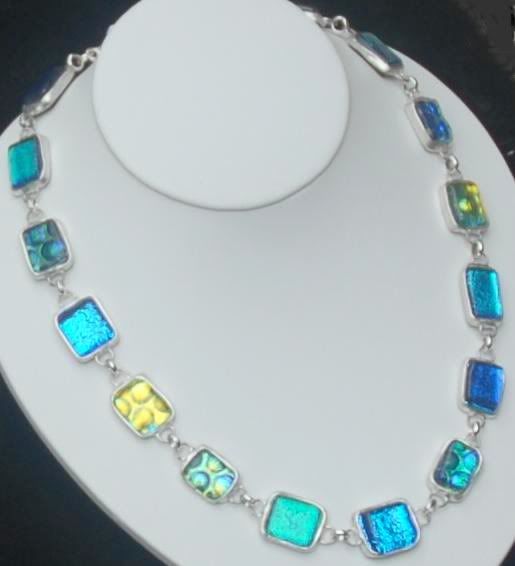
I am often asked "Do you use any paint on your pieces?". The answer is "no, although I would like to try that technique as well. Many of my pieces are made with dichroic glass, a type of glass that has grown in popularity dramatically." Here is a brief overview of what dichroic glass is and how it is made....
The word "dichroic" is derived from two Greek roots, "di" for two and "chroma" for color. So "dichroic" literally means "two-colored", especially when viewed from different angles or from transmitted to reflected light. This bi-colored effect is produced by a process called "thin film physics". Thin-film physics also explains rainbows in soap bubbles, the swirling colors in a thin layer of oil floating on water, and the vibrant iridescent reflections on a dragonfly's wings. To make dichroic glass, metallic oxides (such as titanium, silicon, and magnesium) are heated in a vacuum chamber to very high temperatures, using a high-voltage electron beam, until they are vaporized and deposited onto the surface of glass. The thickness of the oxide on the glass is determined by time and temperature.
Dichroic glass is a high-tech spin-off of the space industry. It was developed for the laser industry but it has become one of the most popular materials used by glass artists today. The brilliance of dichroic glass in natural light or sunlight is truly amazing. Pictures just do not do justice to the depth and play of color. There are many challenges involved in using dichroic glass to make art glass jewelry, not to mention cost. Once a raw sheet of dichroic glass is fused, its characteristics will change yet again with the new colors shifting towards the blue end of the spectrum. That is why I am often waiting impatiently for my kiln to cool properly so that I may see how my pieces turned out. It is all too tempting to open the kiln door too early to take a peak!!







